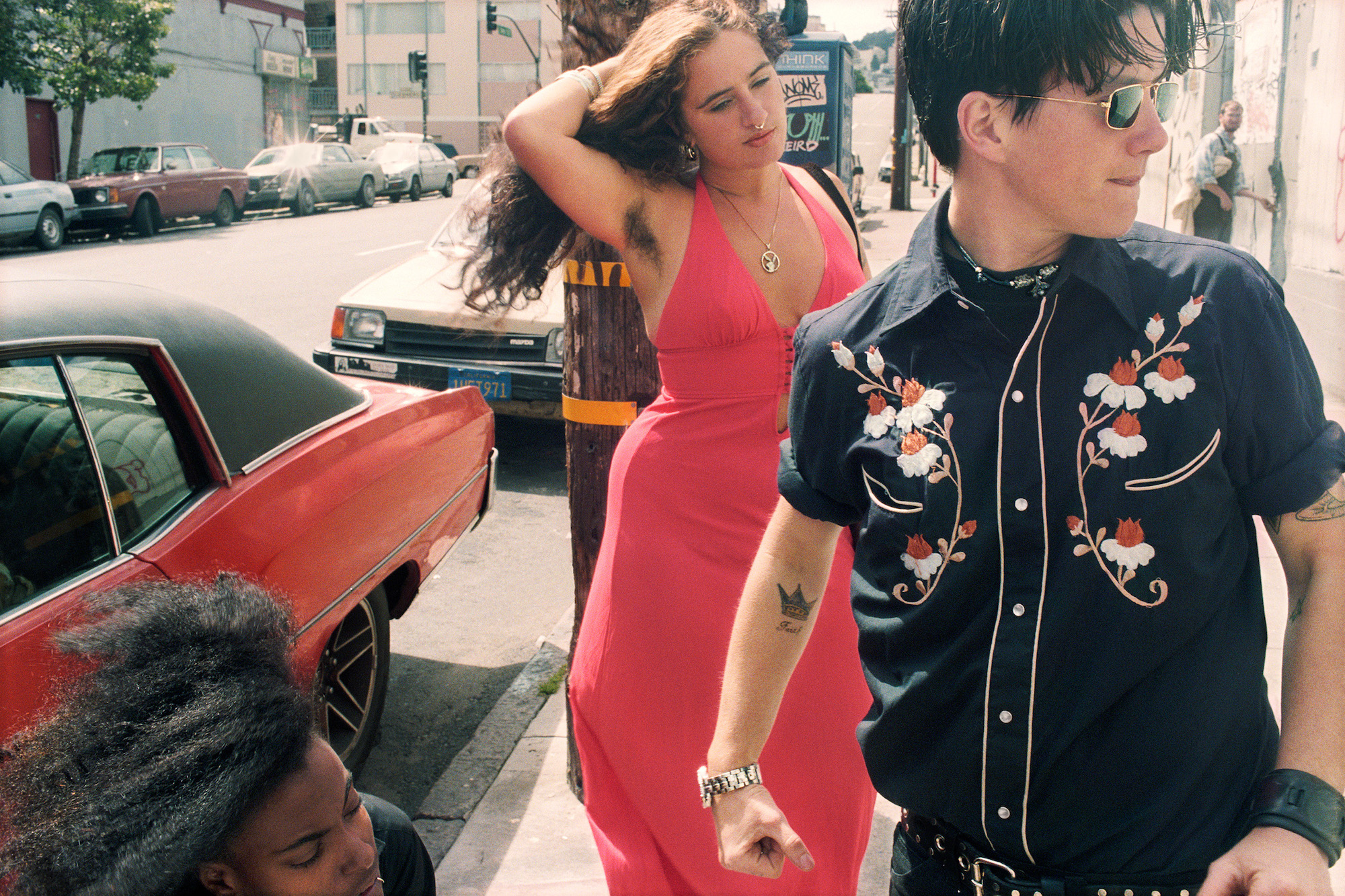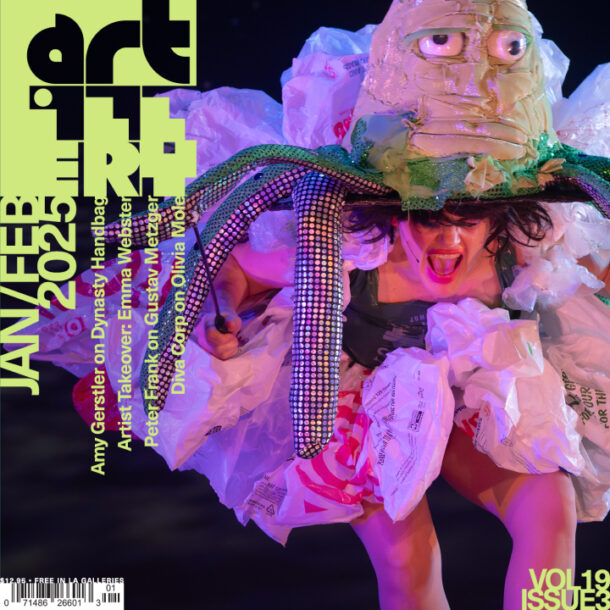The first thing that catches my eye upon walking into the Von Lintel Gallery for an exhibition of photographs from Chloe Sherman’s renowned 1990s series “Renegades” is a large black-and-white print (17.3 × 24 in.) of a half-dozen young women, perhaps in their early twenties, lined up at the counter of a coffee bar, butch-femme-styled in casually improvised variations inspired by everything from bordello-risqué to leather-bar dom, from mock-jock to the street itself. The women direct their gazes outward, as if sizing up a new customer about to walk through the door—who could easily have been Sherman herself. The young artist, no less a seeker than most of her subjects, arrived in San Francisco in the ’90s in search of new ideas about shaping one’s own life and identity. Comfortable with a camera and amongst what quickly became her gang of girls, Sherman was always ready for a fresh detour if it might yield a few pictures.
“They’re making it up as they go along,” I thought upon seeing Sherman’s photograph. And then—in a kind of flashback—“Can I come, too?”
The title of the photograph is On the Way to Folsom Street Fair; and the destination itself says something about a city and a critical part of its culture in transition. Once notorious for its largely male-dominated leather and S&M bars and clubs, and the kinds of after-hours sexual underground spaces that would make Dennis Cooper blush, Folsom Street in the 1990s was increasingly open to women. As gay men were disappearing from AIDS ravaged San Francisco and particularly its gay cultural center of gravity
in the Castro district, queer women became increasingly visible in the adjacent Mission District. Sherman captures much of this fresh energy and esprit in “Renegades” (published as a book by Hatje Cantz in 2023, coinciding with Sherman’s exhibition at the F³-Freiraum für Fotografie in Berlin).
ARTILLERY caught Sherman moving into a new studio—an almost pristine white space (but, as Sherman herself said, “won’t be sparse for long….”)—and we settled in to chat about the 1990s.
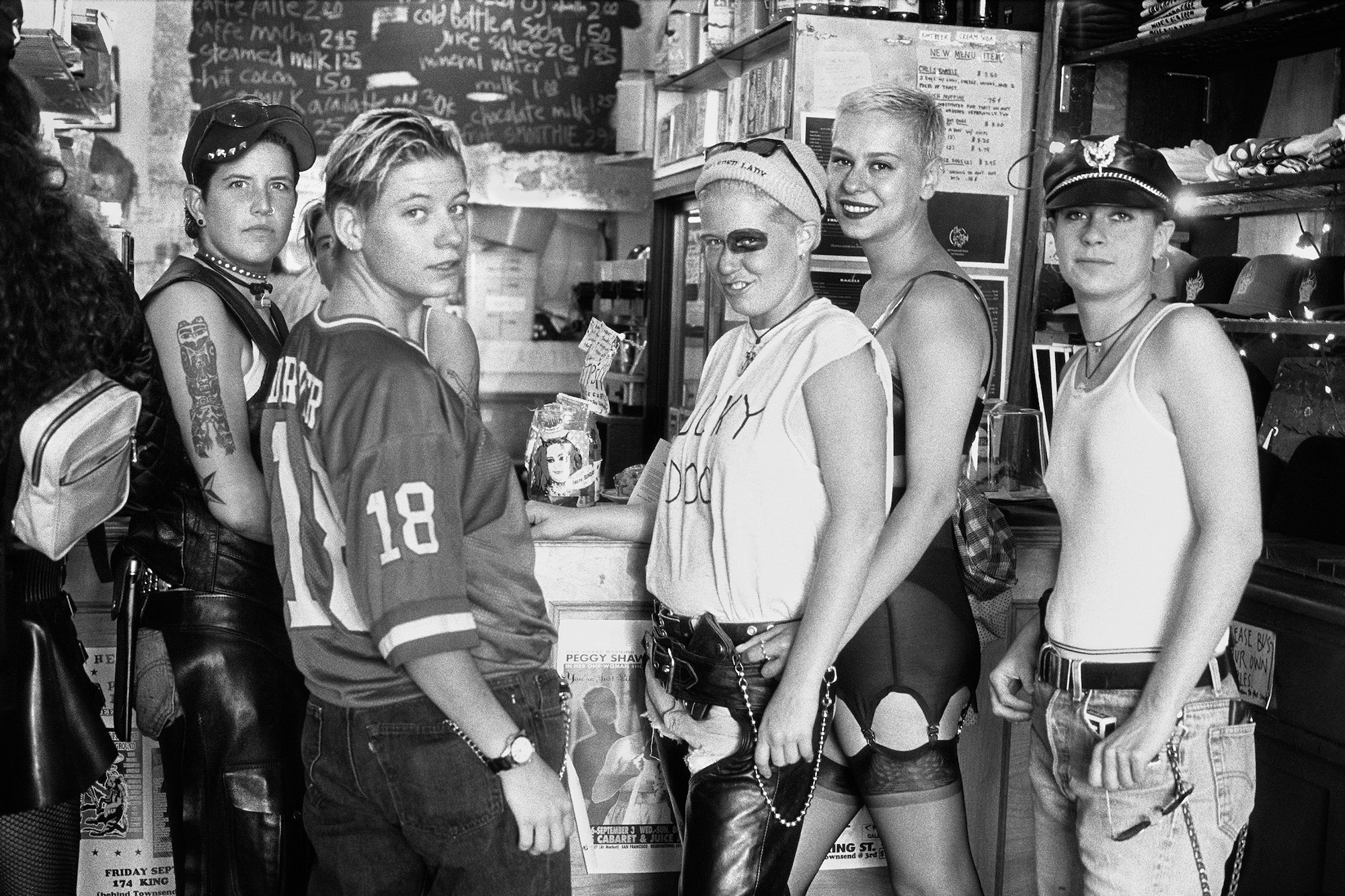
Chloe Sherman, On The Way To Folsom St Fair, 1994.
Ezrha Jean Black: You were back in school in what was then your home base of Portland, Oregon, after moving around between several East Coast colleges. What compelled you to move to San Francisco?
Chloe Sherman: I was taking a class in women’s studies, and I went to Powell’s Bookstore in Portland and found a wonderful book of photography by Del LaGrace Volcano (note to reader: remember that name) called Love Bites (1991)—environmental portraits of dykes in San Francisco. And I thought, “Wow—‘where is this?!’ It felt like a little snow globe into this life that I wasn’t living but wanted to know. I didn’t know when I’d get to London, but I was determined to check out San Francisco because I needed to find this. “Where are these people and what are they doing?” It became my bible.
There was also this San Francisco zine about bike messengering called Mud Flap, edited by the filmmaker Greta Snider (a bike messenger herself at the time). I had just started bike messengering in Portland, which I thought was the coolest thing ever. So, I thought, “I’m going to go to San Francisco and get a bike messenger job…”
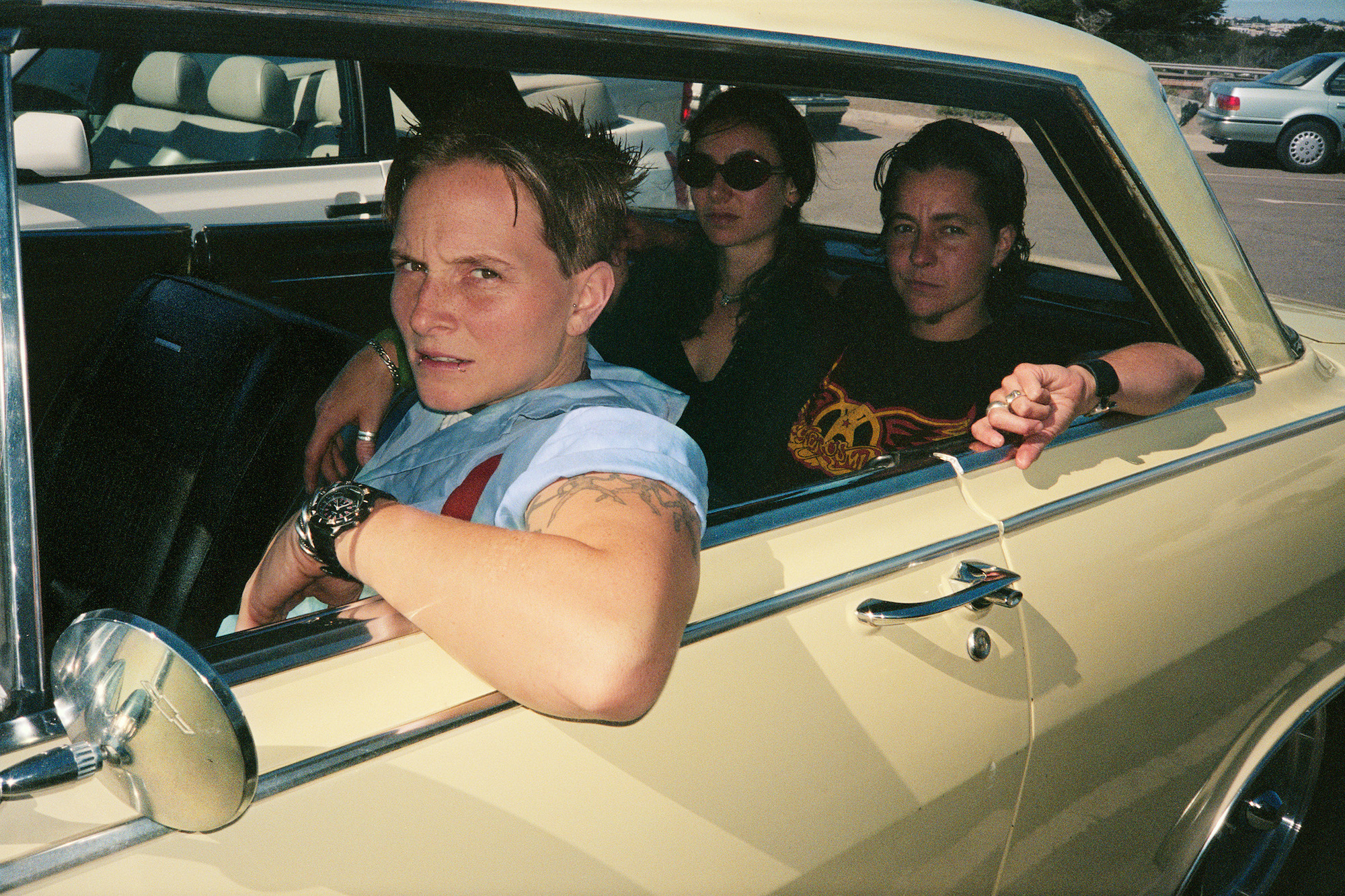
Chloe Sherman, In My Chevy Nova, Ace Driving, 1997.
EJB: There’s a kind of generational shift we see in the photographs where some of the women are seen taking up the attire, accessories, and attitude that were once the province of gay male culture, and adapting them for themselves. Beyond access to cool vintage emporia and tattoo salons, what did you make of what you saw happening there?
CS: We were coming into the city bringing a different energy and a very new kind of feminism as well, with gender politics very much at the forefront: separatist lesbian, renegade, radical. People were experimental with gender in ways that had once felt less welcomed in lesbian politics.
As 20-something kids, we were creating a new politics that worked for us, and really embraced gender experimentation and variation—being butch and femme. There was this sense of finding each other and experimenting with and claiming identity. There was also an incredible sense of collaboration, creative momentum, and uplift I was drawn to.
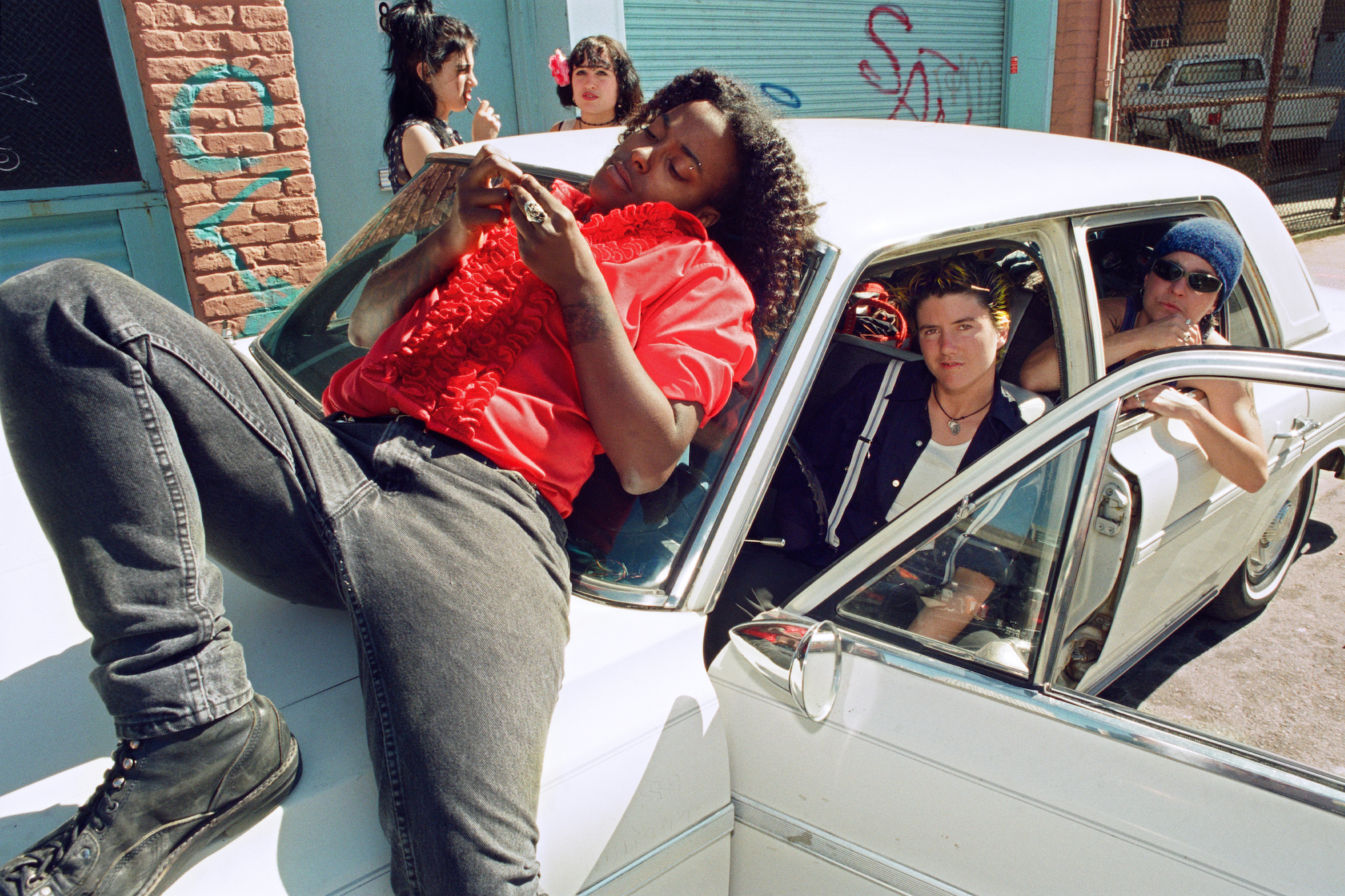
Chloe Sherman, Summer In The City, mid-90s.
EJB: You eventually took your photography pursuits to the San Francisco Art Institute (with some encouragement from Cathy Opie), but you had already done some photography in Portland, and clearly had some interest in the art. What compelled you to carry this pursuit forward—now and then?
CS: It was always an interest. I loved shooting photos, and I loved that with documentary photography, I could merge aesthetics with my interests in social and political activism.
Once I was in San Francisco, I just never left home without my camera. It was a very formative group of people. Whatever we were doing, I was shooting. I was struck by the beauty and resilience of the people I was meeting and watching—friends, neighbors, any part of the community. It was a gritty, scrappy group of DIY dykes, not afraid to be weirdos and push the envelope with gender and experimentation.
On one hand, it was like being a Trojan Horse, with all of us in some funny way eager to dress up, express ourselves for the camera. But it also became something that was almost peripheral. The thing about having a camera on you at all times is that you become almost unconscious of it.
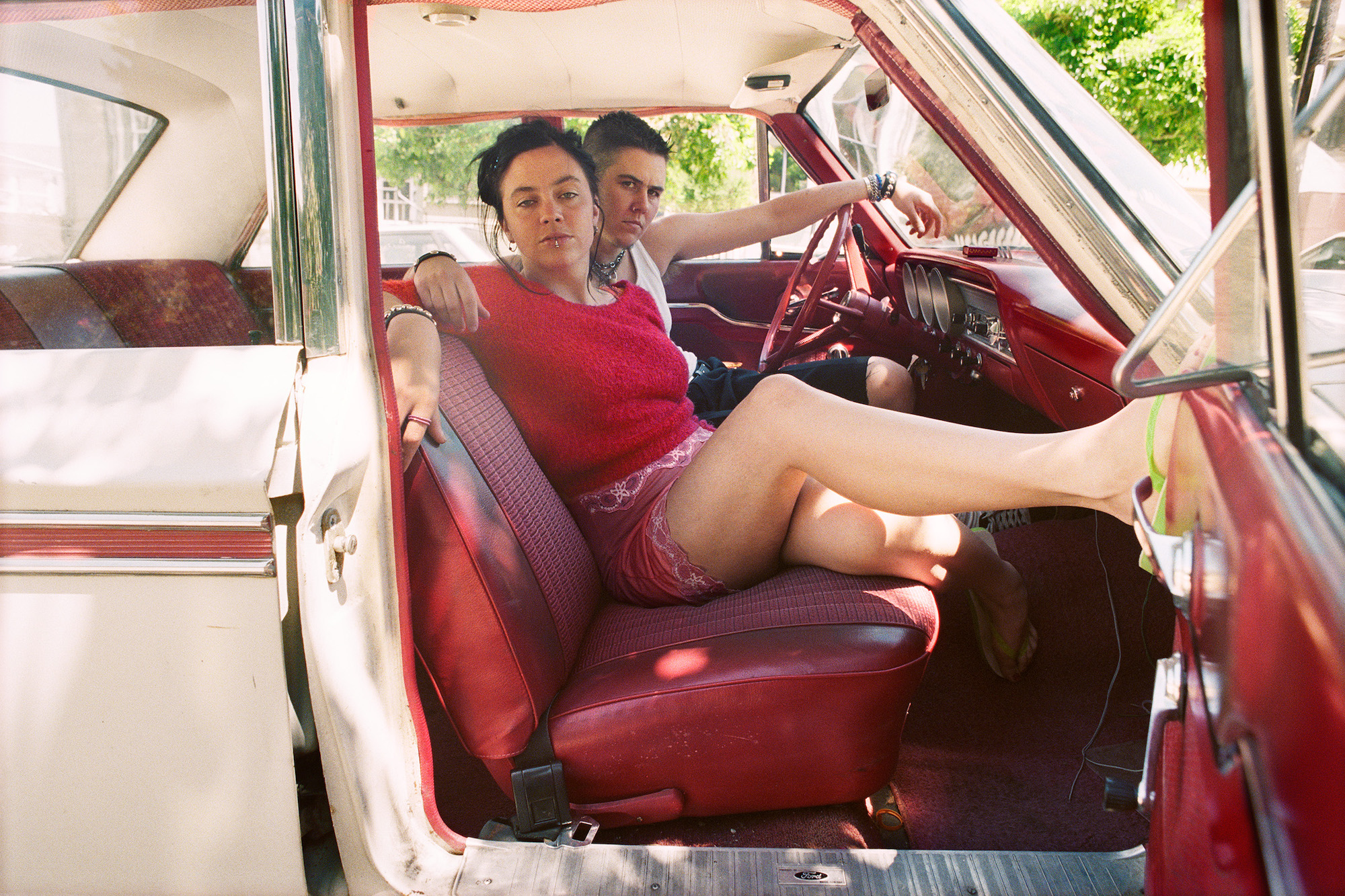
Chloe Sherman, Dusty and Mary, 1998.
EJB: We see a kind of “car culture” happening here—reminiscent of a certain strain of Latinx art and photography frequently seen here in Los Angeles—practically from the 1950s forward. But not so prevalent in San Francisco and Northern California. What’s that about? Is there some aspect of lesbian/queer culture in San Francisco influenced by the Latinx/ car culture(s) of the Los Angeles area?
CS: Some of it is a coincidence. But also, most of us were living in the Mission, which is a multi-generational Latinx. The irony is that when I look at my photos, I see the cars, but I don’t even remember many of us having cars. We certainly weren’t buying new cars. But if, say, someone noticed an old Rambler for $800, they might snap it up and drive it until it stopped. The vintage cars looked better with their suits, vintage dresses, and fishnets.
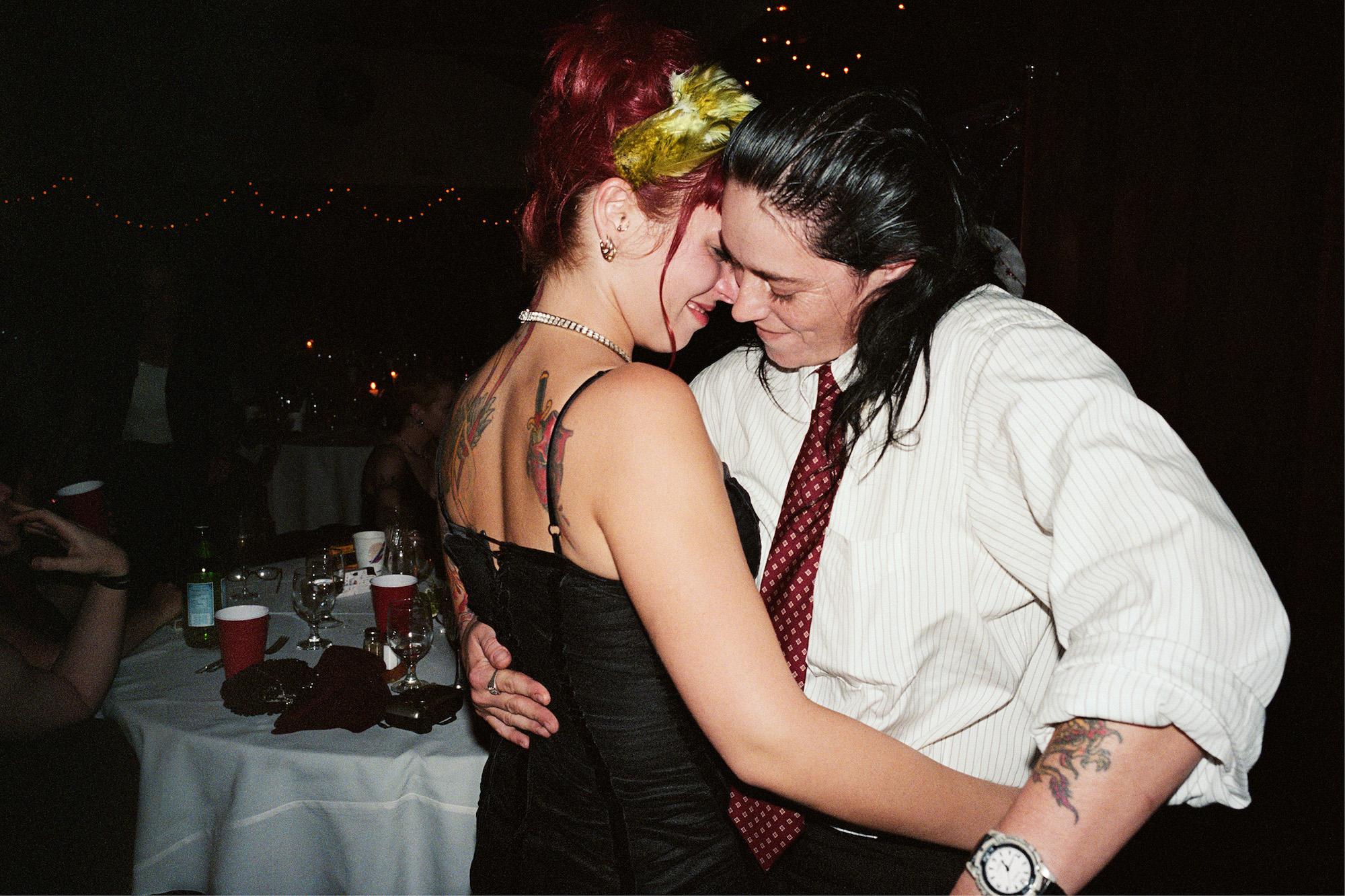
Chloe Sherman, Wedding Dance, 1999.
EJB: The term “renegade” carries certain connotations: defiance, rebellion, rejection, even betrayal. To what extent were your subjects (or yourself) acting out a rebellion, or rejection of something abandoned or left behind?
CS: Anyone coming into their identity is inclined to push the envelope, challenge the status quo, to make everything you do challenge what’s expected. There were a lot of us coming out of 1970s feminism and the AIDS crisis. But there was something about this group of people that embraced a playfulness and lightness and absurdity. It wasn’t just cosplay, but seriously ironic. In every way we were fucking with gender, just being radically opposite of what was expected. “Is this what you want? Trust me—we’ll do the opposite!” Not perversely, but to express and understand parts of people they were exploring, in a setting that allowed for exploration, and supporting, encouraging, and enjoying it.
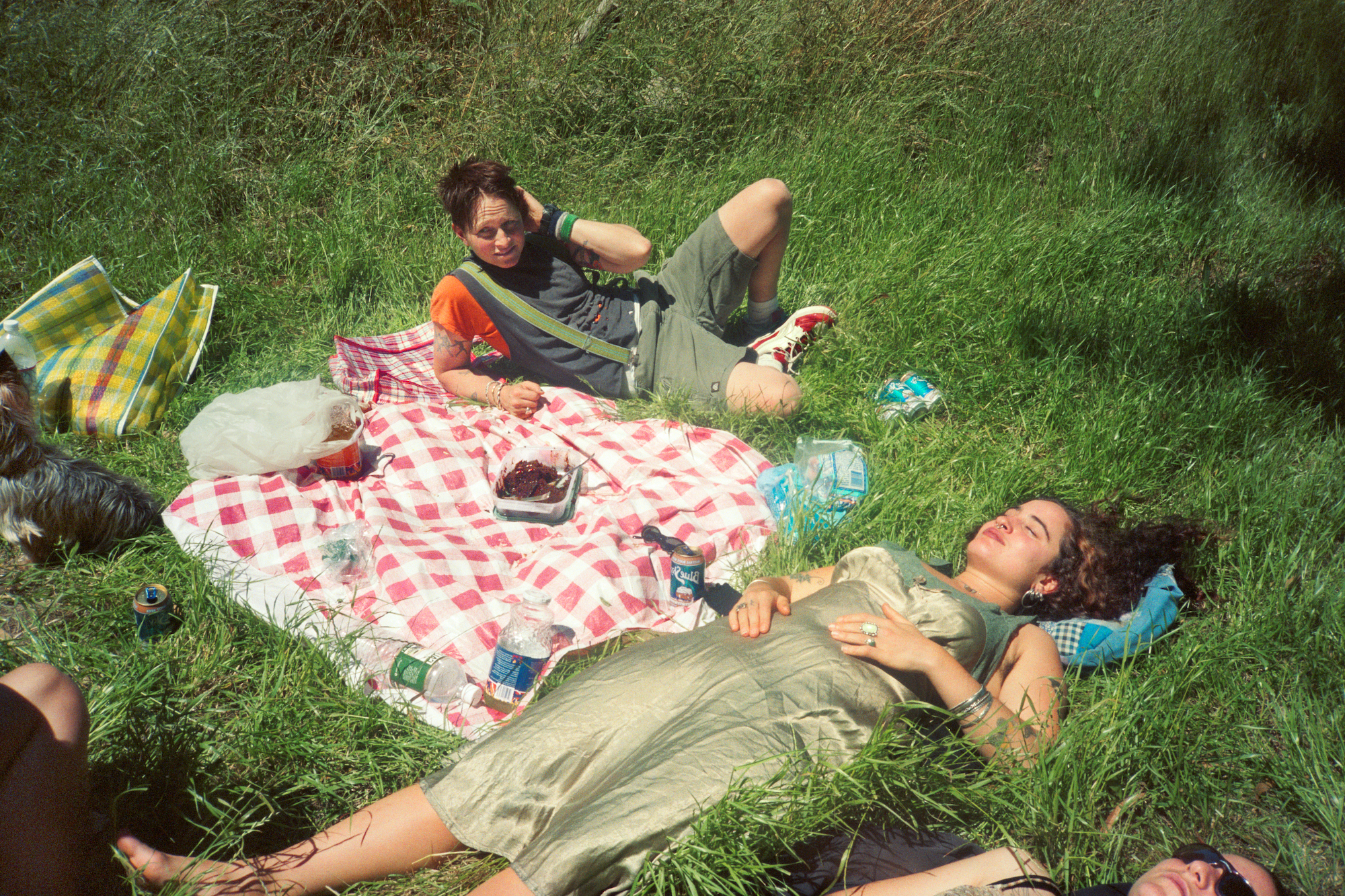
Chloe Sherman, Picnic Near Golden Gate Bridge, 1998.
EJB: We see some of your subjects here (e.g., Harry Dodge; Silas Howard) in the earliest stages of gender transition in some of these photographs. Were you yourself, on some level, transitioning to a different identity than you had before arriving in San Francisco?
CS: Far less so. I wasn’t transitioning as much as coming into myself. I felt very arrived, in an exciting place. And I had found a group of people I was comfortable around who made me feel at home and grounded in a safe place. We were exploring what something else would look like—and having fun.

